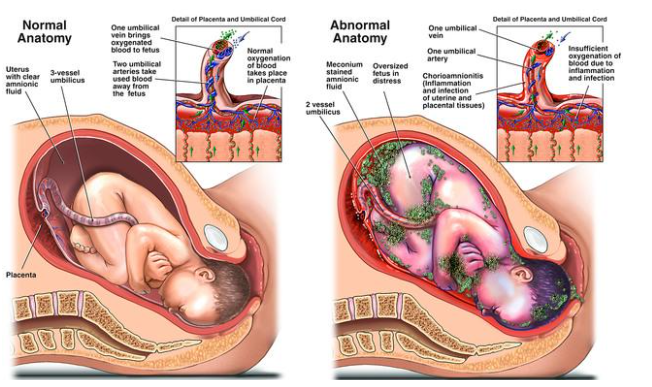A nurse is evaluating the bonding between a patient who had a cesarean delivery and her newborn.
Which of the following behaviors by the patient indicates positive bonding?
Holding the baby close to her chest and stroking his hair
Looking away from the baby and talking to the visitors
Handing the baby to the nurse whenever he cries
Feeding the baby with a bottle and avoiding eye contact.
The Correct Answer is A
The correct answer is choice A. Holding the baby close to her chest and stroking his hair indicates positive bonding between the mother and the newborn. This behavior shows that the mother is attentive, affectionate, and responsive to her baby’s needs.
Choice B is wrong because looking away from the baby and talking to the visitors suggests that the mother is not interested in or attached to her baby. She may be distracted, overwhelmed, or depressed.
Choice C is wrong because handing the baby to the nurse whenever he cries implies that the mother is not willing or able to comfort her baby. She may be avoiding contact or feeling helpless.
Choice D is wrong because feeding the baby with a bottle and avoiding eye contact indicates that the mother is not engaging with her baby. She may be missing an opportunity to bond through eye contact, touch, and voice.
Nursing Test Bank
Naxlex Comprehensive Predictor Exams
Related Questions
Correct Answer is B
Explanation
The correct answer is choice B. The client can use patient-controlled analgesia to self-administer opioids.This is a form of multimodal analgesia, which is the core principle for cesarean delivery pain management.
Patient-controlled analgesia allows the client to have control over their pain relief and adjust the dose according to their needs.
Choice A is wrong because the client may experience delays in receiving analgesics if they have to request them from the nurse, which can lead to inadequate pain relief and increased opioid consumption.
Choice C is wrong because ice packs are not recommended for cesarean delivery pain management, as they may interfere with wound healing and increase the risk of infection.
Choice D is wrong because deep breathing and relaxation exercises are not sufficient to manage acute postoperative pain, although they may be helpful as adjuncts to pharmacologic methods.
Correct Answer is D
Explanation
The correct answer is choice D. All of the above interventions should be implemented in the immediate postoperative period after a cesarean delivery.
Choice A is correct because assessing the client’s fundus for firmness and position is important to prevent postpartum hemorrhage and monitor uterine involution.The fundus should be firm and at the level of the umbilicus one hour after delivery and descend into the pelvis at a rate of approximately 1 cm per day.
Choice B is correct because encouraging early ambulation can prevent thromboembolism, which is a potential complication of cesarean delivery.Early mobilization can also reduce pain, ileus, and urinary retention.
Choice C is correct because monitoring the client’s intake and output can help detect fluid imbalance, dehydration, or urinary tract infection.
Fluid intake should be adequate to maintain hydration and support lactation.Urinary output should be at least 30 mL per hour.
Therefore, choice D is correct because all of the above interventions are appropriate for postoperative care after a cesarean delivery.

Whether you are a student looking to ace your exams or a practicing nurse seeking to enhance your expertise , our nursing education contents will empower you with the confidence and competence to make a difference in the lives of patients and become a respected leader in the healthcare field.
Visit Naxlex, invest in your future and unlock endless possibilities with our unparalleled nursing education contents today
Report Wrong Answer on the Current Question
Do you disagree with the answer? If yes, what is your expected answer? Explain.
Kindly be descriptive with the issue you are facing.
